Description
What is a Sector Antenna 4G Panel Antenna For a Cell Phone Tower?
Sector Antenna 4G Panel Antenna Description:
C&T RF Antennas Inc’s CTRF-BS-8027-1214D65XBZ-002 Sector Antenna 4G Panel Antenna For Cell Phone Tower 806-960MHz/1710-2700 MHz 4G LTE sector antenna, 120-degree panel antenna is viable as a base station or access point antenna for wireless internet service provider applications.
The Sector Antenna 4G Panel Antenna covers frequencies 806-960MHz/1710-2700MHz 4G LTE full band with a gain of 12/14dBi and ±45-degree dual slant polarization. It delivers complete coverage with two or three sector antennas combined.
The Sector Antenna 4G Panel Antenna operates in the 806-960MHz/1710-2700MHz frequency band with dual slant polarization, this sector antenna can deliver reliable coverage while penetrating dense foliage. The elevation beamwidth is 30 degrees and the front-to-back ratio is 23 dB.
The Sector Antenna 4G Panel Antenna is available at C&T RF Antennas Inc, contact us for more details on the Sector Antenna 4G Panel Antenna such as Sector Antenna 4G Panel Antenna datasheet, Sector Antenna 4G Panel Antenna pricing, Sector Antenna 4G Panel Antenna inventory.
Or other Sector Antenna 4G Panel Antenna styles.
Base station antenna solution Sector Antenna 4G Panel Antenna for TD-LTE and FDD LTE scale networking
The TD-LTE base station antenna continues the mainstream design concept of TD-SCDMA in the 3G era, that is, the 8-antenna technology supports beamforming.
In the future application of TD-LTE, the F (1880 ~ 1920MHz) and D (2500 ~ 2690MHz) frequency bands will be used as the selected frequency bands for wide coverage and continuous urban coverage, respectively, while also considering the compatibility of TD-SCDMA and future deep coverage.
The need for post-base station antenna tilt adjustment. The overall shape of the TD-LTE base station antenna will reflect the trend of broadband, electrical regulation, and independent adjustment.
C&T RF Antennas Inc, a leading provider of TD-SCDMA base station antenna solutions, has introduced a new range of base station antenna products for six different scenarios in response to the development needs of TD-LTE; globally, due to the traditional 3G system With the majority of shares, as a continuation, the use of natural LTE FDD will be more extensive than TD-LTE.
As a leader in the development of wideband phase shifters and multi-port base station antennas, C&T RF Antennas Inc. has introduced a wide variety of ultra-wideband multi-port base station antennas in response to the development of LTE FDD technology. For details, see “Base Station Antenna Solutions in the LTE Era.”
In order to meet the special requirements of customers, C&T RF Antennas Inc also provides corresponding landscaping antennas, including FA band 8-channel 0-14° ESC exhaust pipe, cluster antenna, FAD band broadband 8 channels 2-12° Adjust the exhaust pipe, square column, cluster antenna, etc. to meet the needs of customers in various scenarios.
A high-efficiency RF antenna needs something lacking in today’s smartphones, tablets, and wearables. Moreover, antennas in these devices must cover a larger frequency bandwidth. Also required better radio communication in terms of coverage and data rate and longer battery life. And, of course, more design flexibility.
C&T RF Antennas Inc provides internal & external antennas with antenna radio frequencies such as NFC, 169MHz, 230MHz, 315MHz, 433MHz, 868MHz, 915MHz, VHF&UHF, Lora, NB-IoT, ADS-B, GSM, GNSS, GPRS, 1.2 GHz, 1.4 GHz, 1.8 GHz, Wi-Fi 2.4 GHz, 5.8 GHz, Cellular 2G, 3G, 3.5 GHz, 4G LTE, GPS, 5G NR, 6G, etc.
C&T RF Antennas Inc. provides RF antennae with Omni & Directional antenna types such as Dipole Antennas, Whip Antennas, Marine Antennas, Router Antennas, MIMO Antennas, Combo Antennas, PCB Antennas, FPC Antennas, Spring Antennas, Magnetic Antennas, Sector Antennas, Yagi Antennas, and Accessories, etc, for IoT & M2M industries.
Contact us for more details on the Sector 4G Panel Antenna For Cell Phone Towers such as Sector 4G Panel Antenna datasheet, Sector 4G Panel Antenna pricing, and Sector 4G Panel Antenna inventory, or other Sector 4G Panel Antenna types.
Sector Antenna 4G Panel Antenna Specifications:
Sector Antenna 4G Panel Antenna Electrical Specifications |
|
| RF Antenna Type | Sector Antenna |
| Model | CTRF-BS-8027-1214D65XBZ-002 |
| Frequency | 806-960MHz/1710-2700MHz |
| Gain | 12dBi/14dBi |
| VSWR | ≤2.0 |
| Impedance | 50 Ω |
| Polarization | Dual Slant (45 Degrees) |
| Horizontal Beam Width | 65°±10° |
| Vertical Beam Width | 35°±5° 25°±7° |
| Connector | N-Type |
| Max Power | 50W |
| Lightning Protection | DC Ground |
| Directionality | Directional |
Sector Antenna 4G Panel Antenna Mechanical Specifications |
|
| Dimension | 600*280*125mm |
| Front-to-Back Ratio | ≥23dB |
| Port to Port Isolation | ≥25dB |
| Storage Temperature Range | -40~+70°C |
| Working Temperature Range | -40~+65°C |
| PIM Test | (2@43dBm) ≤-150dBc |
| Color | Warm White |
| Antenna Form | Multi-Band |
| Mounting | Pole Mount |
| RoHS | Compliant |
| Applications | GSM, RFID, IoT/NB-IoT/LoRa |
What is a Sector Antenna?
A sector antenna is a directional microwave antenna with a sector radiation pattern. Typical designs are 60°, 90°, and 120°, usually with a few extra degrees. The biggest use of these antennas is as antennas for cellular base station sites.
They are also used in other types of mobile communications, such as in WiFi networks. They are used for a limited distance of about 4 to 5 kilometers.
Sector Antenna Structure
A typical sector antenna is shown on the right. At the bottom, there are RF connectors and adjustment mechanisms for coaxial cables (feeders). For its outdoor arrangement, the main reflector screen is made of aluminum, and all internal components are housed in a fiberglass radome to keep its operation stable, regardless of weather conditions.
Sector Antenna Grounding
Grounding is very important for outdoor antennas, so all metal parts are DC grounded.
Sector Antenna Shape
The long and narrow shape of the antenna makes it form a fan-shaped radiation pattern, which is wide in the horizontal direction and relatively narrow in the vertical direction.
According to the depicted radiation pattern, a typical antenna used in a three-sector base station has a horizontal beamwidth of 66°. This means that the signal strength in the ±33° direction is reduced by half (under 3dB) from the peak at its center. In the ±60° direction, it is recommended to be a sector boundary, where the antenna gain can be ignored.
Vertical beam width
The vertical beamwidth is not more than 15° and 7.5° in each direction. Compared with antennas used for commercial broadcasting (such as AM, FM, and TV), they must be able to listen at a certain distance. There is usually a downward beam tilt or down tilt so that the base station can cover its neighboring areas more effectively. It will cause radio frequency interference in distant areas.
Lower inclination
The coverage area determined by the projection of the radiation pattern on the ground can be adjusted by changing the downward tilt angle of the pattern. In some models, this is done mechanically by manually adjusting the tilt of the antenna with an adjustable mounting bracket.
In closer sector antennas, the pattern electrons can be tilted through adjustable phase shifters in the feed of each dipole element. These are adjusted from the ground through a remote control circuit, eliminating the need for technicians to climb the antenna tower.
Sector Antenna Classification
It has two forms: metal plate type and metal wire type. This kind of antenna widens the antenna frequency band because of the enlarged cross-sectional area of the antenna. The wire sector antenna can use three, four, or five metal wires.
Development frontier
1. Ultra-wideband sector antenna with a low radar cross-section
This is a new type of ultra-wideband sector antenna that can be used on low-visibility platforms. The sector antenna uses a sectoral structure composed of a rectangular strip and 8 arc strips symmetrically distributed on the rectangular strip to design the antenna’s radiating element;
The radiation floor is designed with a rectangle with 90-degree arc angles on both sides; the radiation unit and the radiation floor are printed on both sides of the FR-4 dielectric material board (dielectric constant 4.4). Study the radiation and scattering characteristics of the antenna,
Compared with the reference antenna, it is found that the antenna has a good radar cross-section reduction effect under the requirements of the relevant indicators of the ultra-wideband antenna. This sector antenna is suitable for occasions where the ultra-wideband antenna has a low radar cross-section requirement.
2. High-gain lens-loaded sector beam antenna
With the rapid development of electronic science and technology, sector beam antennas are widely used in medical imaging, mobile communication base stations, indoor local wireless networks, and other aspects.
At the same time, the vehicle-mounted and airborne anti-collision antenna composed of fan-beam millimeter waves, as one of the core components of the safety control system of automobiles and small aircraft, has an increasingly broad market prospect. Therefore, it is very important to study how to design high-performance sector beam antennas.

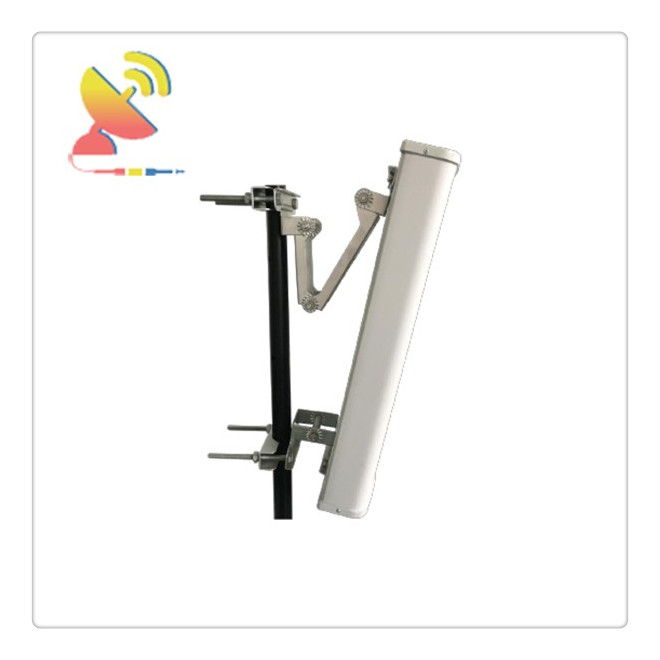
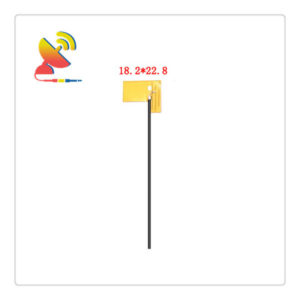
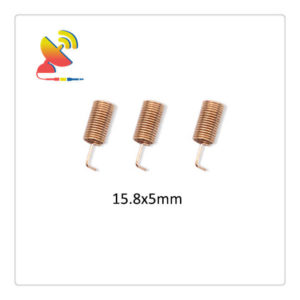
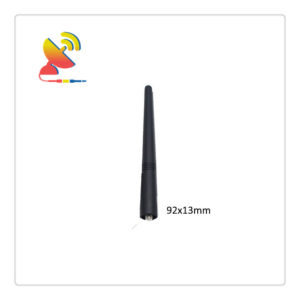
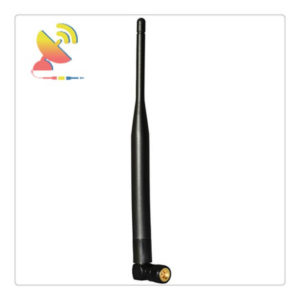
Reviews
There are no reviews yet.